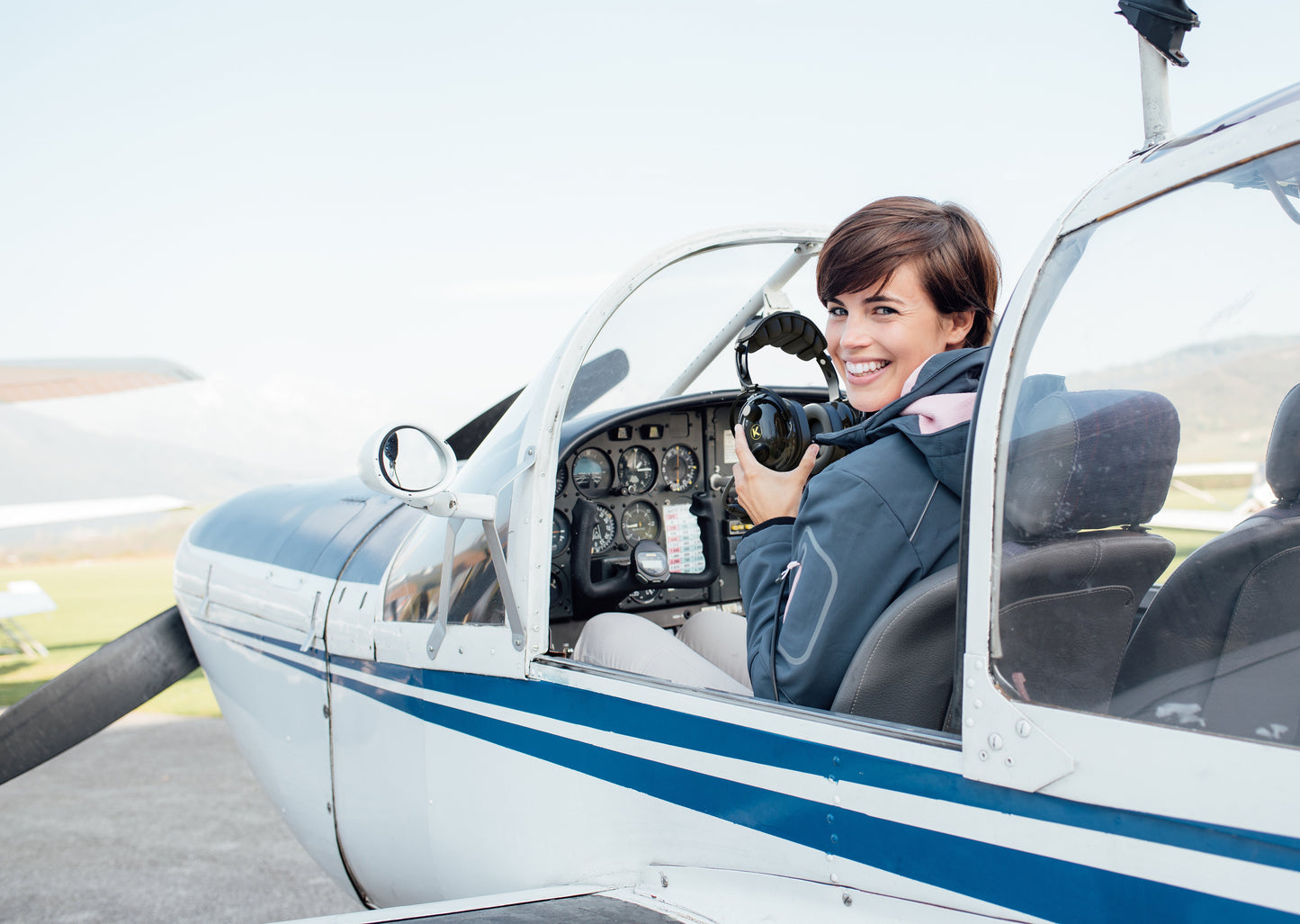
Kore Aviation - If you are starting helicopter flight training or moving over from airplanes, one of the first things you will notice is that helicopter headsets are not quite the same. They might look similar, but the differences become clear once you are in the air.
So why are helicopter headsets different? It all comes down to how helicopters operate. They are louder and vibrate more, and the environment inside the cockpit is more demanding. Pilots need headsets designed to handle those conditions.
Here is a breakdown of how helicopter headsets work, why they are different, and what you should know if you are training or planning to fly rotorcraft.
1. Helicopters Are Extremely Noisy
Helicopters produce constant noise from the rotor blades, transmission system, and engine. The sound level in the cabin can easily reach over 100 decibels, well above the safe limit for long-term hearing.
Unlike many airplanes, helicopters are not well insulated. The structure is built to be light and functional, not necessarily quiet. As a result, the headset must handle this environment and protect the pilot’s hearing. This is one of the biggest reasons helicopter headsets need better noise protection.
2. Different Plug and Connection Systems
Helicopter headsets do not use the same plug as airplane headsets. Most airplane headsets have two plugs, often referred to as PJ plugs, while helicopter headsets usually come with a single plug known as the U-174.
This type of plug is built to be durable and secure. It holds steady during vibration and constant movement, which is common in helicopter operations. Using a headset with airplane plugs in a helicopter will not work unless you use a special adapter. Even then, the audio quality and connection may not be reliable.
3. Clear and Reliable Communication
In a noisy cockpit, clear communication is a must. Helicopter headsets are designed to deliver strong, clear audio even when the background noise is intense. The microphone on these headsets is often more directional. That means it picks up your voice but reduces other sounds around you.
You will also notice that the mic is mounted on a flexible boom. This allows you to place it exactly where you need it to be for the best sound pickup. Some models have voice-activated features that help reduce unwanted transmissions from cabin noise.
Hearing and speaking clearly without strain is a big part of flying safely.
4. Built to Handle Tough Environments
Helicopter missions often involve landing in tight spaces, flying in various weather conditions, and operating in remote areas. The headset has to be ready for that.
Helicopter headsets have stronger materials, more padding, and better seals. The cables are often thicker and reinforced to handle wear and tear. Many models are also built to resist moisture and dirt, which is useful for pilots who fly in agriculture, emergency services, or utility work.
At the same time, they need to be comfortable. Many flights last several hours. A heavy or tight headset can lead to fatigue, affecting focus. Good helicopter headsets balance strength and comfort so you can fly longer without distractions.
5. Designed for Different Types of Pilots
Not every helicopter pilot flies the same way. Some are in training, flying short flights in simple aircraft. Others are flying full-time in commercial or emergency operations. Your headset needs may change based on your experience level and your mission.
If you are just starting, you might want something reliable and affordable. If you are flying long shifts or working in loud environments, you may want a headset with active noise cancellation, better mic quality, or wireless connectivity.
No matter your experience, choosing a headset that fits your aircraft and flying style will make a difference.
Can You Use an Airplane Headset in a Helicopter?
You can, but it is not recommended. An adapter might allow you to plug in, but it will not change how the headset performs. Most airplane headsets do not offer the same level of noise control and are not built for the helicopter environment.
If you plan to fly helicopters regularly, getting a headset for that purpose makes more sense. You will get better audio quality, a safer fit, and more comfort during each flight.
Discover More: Finding The Best Helicopter Headset
What to Look for When Choosing a Headset
When shopping for a helicopter headset, check compatibility with your aircraft. Ensure the plug type matches, and look for models that work well in noisy cabins.
Comfort is also key. Look for lightweight designs with soft ear seals and adjustable headbands. A good fit will reduce pressure and help you stay focused.
Finally, think about audio quality and mic clarity. You want to be able to hear instructions, speak clearly, and trust that your headset will work every time you fly.
Final Thoughts
Helicopter headsets are different because helicopters demand more from them. The noise, the movement, and the flight environment are all more intense. A headset built for airplanes cannot deliver the same experience or safety.
Whether you're a student pilot or flying professionally, the right headset will help you stay sharp, protect your hearing, and make communication easier. It is more than a comfort item, it is part of your flight gear.
If you are ready to take the next step and invest in your aviation headset without overspending, visit Kore Aviation . Flight schools and student pilots across the country trust their affordable headsets. With Kore, you get comfort, clarity, and durability, all designed for those just starting their aviation journey.
